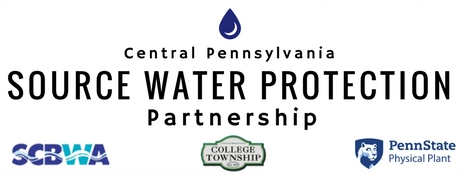Source water protection in pennsylvania
The Pennsylvania Department of Environmental Protection (DEP) is dedicated to the preservation of clean drinking water for all citizens of the commonwealth. To this end, "DEP conducts assessments of the susceptibility of public water system water sources to potential sources of contamination." They also offer the Source Water Protection Technical Assistance Program (SWTAP), which is designed to help communities develop voluntary source water protection plans (much like those established by our water providers). These plans possess six Minimum Elements as outlined by DEP:
- Local steering committee and public participation
- Source water protection area delineation (shown below)
- Contaminant Source Inventory
- Source water protection area management methods and commitment
- Contingency planning; and
- Protection of identified new source sites.
Surface Water Protection
For surface water sources, protection begins with the identification of the drainage basin that contributes to the stream or lake upstream of the intake source. This basin is then divided into three zones: Zone A (closest to the intake), Zone B ( further upstream), and Zone C (the furthest reaches of the contributing basin). For very small basins, only Zone A and Zone B will be identified.
Groundwater Protection
Due to the complicated and "invisible" nature of below-ground water movement, delineating the source area for a well is far more difficult than delineating the source area for a surface water intake. Professional geologists and hydrologists are consulted, and a computer model called the Groundwater Modeling System is used to help identify the contributing area. Once delineation is complete, the contributing area is again divided into three zones: Zone I, Zone II, and Zone III. The area closest to the wellhead comprises Zone I, which extends 100-400 feet out from the well in all directions. The public water supplier is required to control and carefully monitor this area, and no activity can occur here. Zone II describes the area of the aquifer over which water is diverted to the well, otherwise known as the capture zone. Zone III is all of the area that contributes significant quantities of ground or surface water to either Zone I or Zone II.
